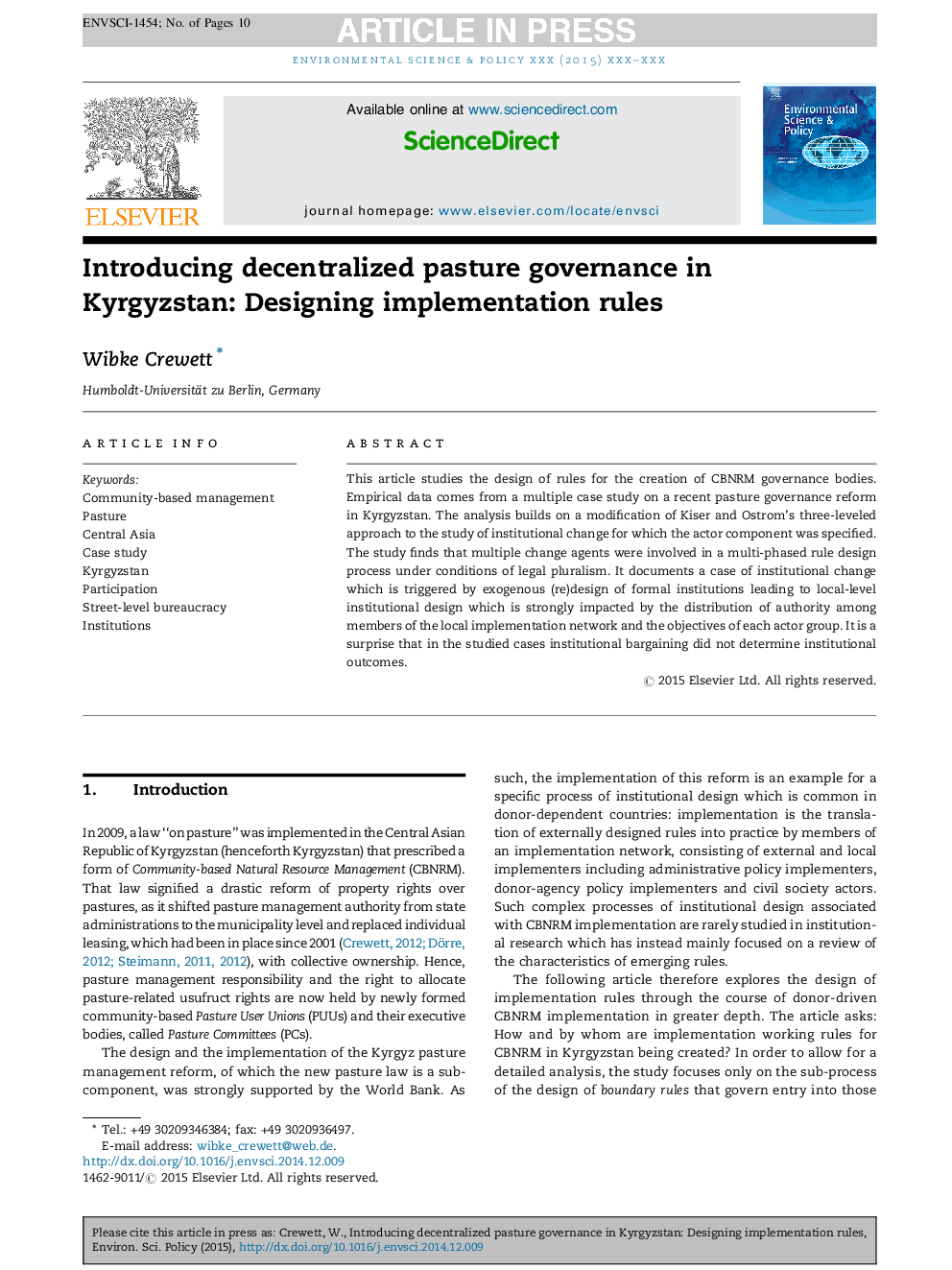| Article ID | Journal | Published Year | Pages | File Type |
|---|---|---|---|---|
| 10504587 | Environmental Science & Policy | 2015 | 10 Pages |
Abstract
This article studies the design of rules for the creation of CBNRM governance bodies. Empirical data comes from a multiple case study on a recent pasture governance reform in Kyrgyzstan. The analysis builds on a modification of Kiser and Ostrom's three-leveled approach to the study of institutional change for which the actor component was specified. The study finds that multiple change agents were involved in a multi-phased rule design process under conditions of legal pluralism. It documents a case of institutional change which is triggered by exogenous (re)design of formal institutions leading to local-level institutional design which is strongly impacted by the distribution of authority among members of the local implementation network and the objectives of each actor group. It is a surprise that in the studied cases institutional bargaining did not determine institutional outcomes.
Keywords
Related Topics
Physical Sciences and Engineering
Energy
Renewable Energy, Sustainability and the Environment
Authors
Wibke Crewett,
